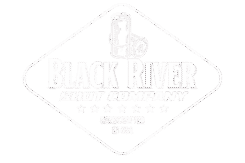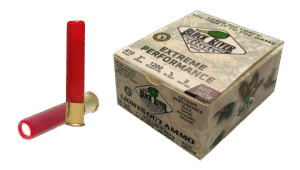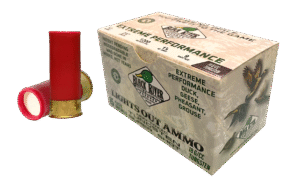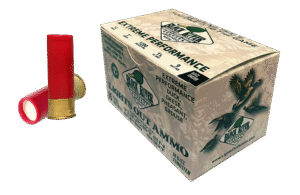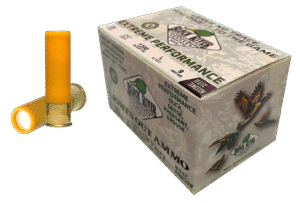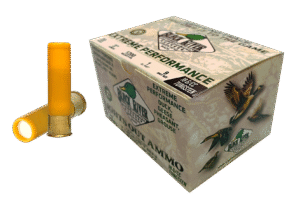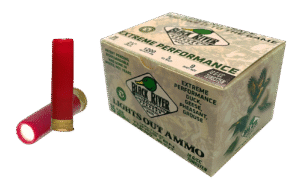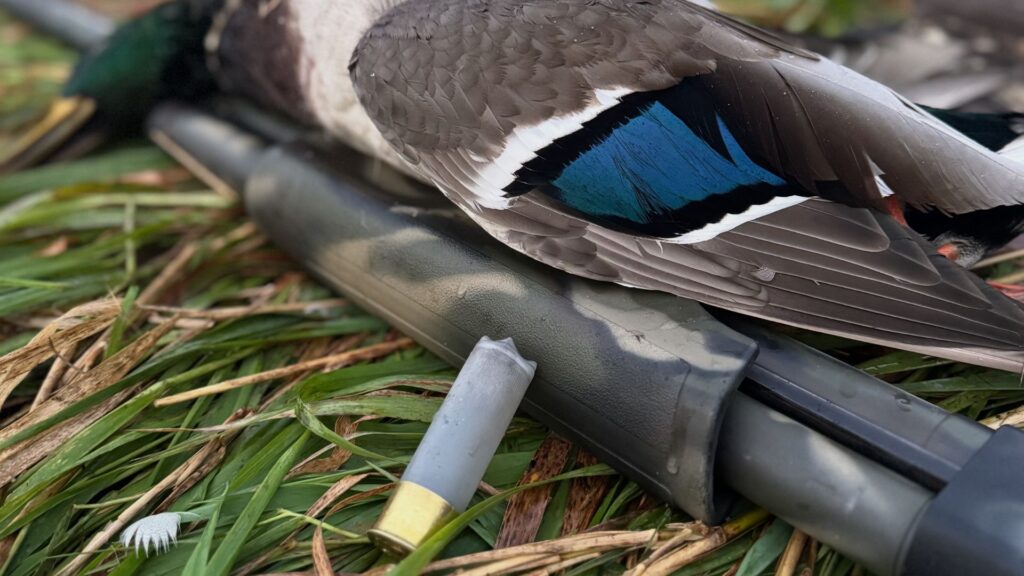
If you’ve spent any time talking shotguns at the range or scrolling hunting forums, you’ve probably seen it:
“Don’t shoot tungsten through your barrel — it’ll ruin it.”
It’s one of those warnings that gets repeated so often it starts to sound like gospel. And years ago, with early tungsten blends and cheap reloads, there was a little truth to it. Back then, pellets were often hard, unbuffered, and unprotected — and that combination could scuff or score barrels that weren’t built for such dense material.
But fast-forward to today, and the conversation looks completely different.
Modern tungsten loads — especially premium TSS (Tungsten Super Shot) shells — have transformed how we think about both performance and barrel safety. With ultra-dense pellets housed inside precision-engineered buffered wads, no part of the shot ever touches the inside of your barrel. Instead, the wad acts as a full-length sleeve, protecting your steel while allowing every bit of tungsten’s ballistic advantage to shine.
At Black River Shot Company, our TSS #9 loads are built with that exact philosophy: maximum performance without compromise. We’ve patterned them through a wide range of modern shotguns and choke systems — from factory models to high-end aftermarket tubes — and the result is always the same: clean bores, tight patterns, and absolute confidence that your barrel is safe.
So why does the myth still stick around?
Because many hunters still remember the old days of “experimental” tungsten mixes and unprotected pellets. The truth is, the technology caught up. With proper wad design, balanced pressure, and buffered payloads, tungsten is not only safe for your barrel — it’s often easier on it than steel.
“Modern tungsten loads — especially premium TSS (Tungsten Super Shot) shells — have transformed how we think about both performance and barrel safety.”
In this post, we’ll break down exactly why:
- What makes tungsten harder than other metals — and why that doesn’t mean danger.
- How BRSC’s buffered TSS #9 load design keeps barrels protected.
- What chokes and setups are tungsten-safe.
- And the real culprits behind barrel damage that have nothing to do with tungsten.
By the end, you’ll know not just that tungsten is safe — but that it’s one of the smartest, most efficient materials you can shoot this season.
Why the Concern Exists
It’s easy to see why hunters were skeptical when tungsten first hit the shelves. Tungsten is one of the hardest materials ever used in a shotshell, measuring over 18 on the Brinell hardness scale — far harder than lead (around 5) and even denser than steel (7.8 g/cc vs. tungsten’s 18.1 g/cc).
When you hear those numbers, it’s natural to assume that something that hard could scratch or wear down a shotgun barrel.
And in the early days, it sometimes did.
Back in the late 1990s and early 2000s, a few experimental tungsten blends entered the market without today’s strict engineering standards. Some of those early loads used unbuffered pellets, or thin, incomplete wads that didn’t fully isolate the shot from the barrel wall. The result was predictable: barrel scuffing, tight choke wear, and a wave of online posts warning hunters to stay far away from “tungsten anything.”
Those warnings stuck around — long after the ammo evolved.
What most hunters didn’t realize was that the problem wasn’t tungsten itself, but the way it was packaged and protected inside the shell. When a tungsten pellet travels down a bore encased in a modern, high-density polymer wad, it never even touches metal. But when a cheap reload or poorly made load skips that protection, it’s like running gravel through your barrel.
In other words, it’s not the element — it’s the execution.
Tungsten’s hardness is actually one of its greatest strengths when engineered correctly. Because it doesn’t deform on impact like softer materials, every pellet stays perfectly spherical during flight, producing tighter, more consistent patterns and more energy downrange. That performance is what drew hunters to tungsten in the first place — and it’s why the myths need to be put to rest.
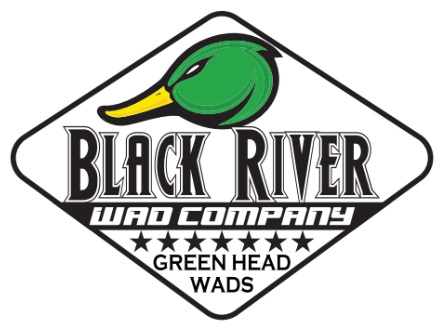
- Green Head Wad Shot Shells
Black River Wad Co .410 Gauge 3″, 5/8 oz – (1200 FPS) TSS #9 (15-Pack)
Original price was: $69.99.$59.99Current price is: $59.99. - Green Head Wad Shot Shells
Black River Wad Co 12 Gauge 2¾″, 1 oz – (1200 FPS) TSS #9 (15-Pack)
Original price was: $89.99.$79.99Current price is: $79.99. - Green Head Wad Shot Shells
Black River Wad Co 12 Gauge 3″, 1⅛ oz – (1200 FPS) TSS #9 (15-Pack)
Original price was: $99.99.$89.99Current price is: $89.99. - Green Head Wad Shot Shells
Black River Wad Co 20 Gauge 2¾″, ⅞ oz – (1200 FPS) TSS #9 (15-Pack)
Original price was: $79.99.$69.99Current price is: $69.99. - Green Head Wad Shot Shells
Black River Wad Co 20 Gauge 3″, 1 oz – (1200 FPS) TSS #9 (15-Pack)
Original price was: $89.99.$79.99Current price is: $79.99. - Green Head Wad Shot Shells
Black River Wad Co 28 Gauge 2¾″, ¾ oz – (1200 FPS) TSS #9 (15-Pack)
Original price was: $79.99.$69.99Current price is: $69.99.
The Role of the Wad — Your Barrel’s Body Armor (Yes, Even When It’s Cardboard)
When people picture a wad, they usually imagine a plastic sleeve that keeps shot together and cushions it from the bore. At BRSC, we took a different path — one that balances protection, performance, and environmental responsibility. Our TSS #9 shells use a precision-engineered biodegradable cardboard wad that performs like a full-length buffer while leaving no long-term trace in the environment. In fact, the wad practically disintegrates after it leaves your barrel as seen in the picture below.
So how does cardboard protect a barrel the same way a polymer wad does?
1. Full-length separation (the core function)
The primary job of any wad is simple: prevent pellet-to-steel contact while maintaining shot column integrity during the pressure spike down the bore. BRSC’s cardboard wad is a full-length design — it surrounds the shot from the hull mouth to the choke, isolating the tungsten pellets during the entire travel inside the barrel. That means the hard tungsten never scrapes the bore or the choke. Functionally, the separation is identical to a plastic full-length wad.
2. Engineered stiffness and buffer layers
Not all cardboard wads are created equal. Our cardboard wads are produced from high-density, multi-ply fiberboard and include internal buffer layers engineered to absorb initial pressure and reduce pellet deformation. Those buffer layers compress and then release cleanly so the shot exits the muzzle in a tight, consistent column. The result: high pattern density and consistent downrange performance — the very reasons shooters choose TSS #9.
3. Moisture and durability — the practical questions
A common concern with biodegradable wads is moisture sensitivity. We addressed that in two ways:
- Humidity-resistant fiber mix: BRSC cardboard wads use a treated fiber blend that resists swelling in typical field conditions. They’re not immune to extreme soaking, but normal weather (rain, dew) will not compromise the wad during firing and flight.
- Precision manufacturing tolerances: Tight tolerances in wall thickness and crimp geometry ensure the wad maintains structural integrity while inside the hull and bore, even after storage in varying environments.
4. Environmental upside — no microplastics
One of the biggest advantages of choosing a cardboard wad is environmental: after firing, the spent wad breaks down far faster than polymer wads. That reduces leftover plastic fragments on marshes and fields, which is an increasing concern among conservation-minded hunters. With BRSC’s biodegradable wad, you get the protective benefits of a full-length buffer while minimizing long-term environmental impact.
5. Why cardboard doesn’t mean compromise
Performance doesn’t suffer because the wad is biodegradable. We validate our loads with the same rigorous testing used for polymer-buffered shells:
- Pressure curve testing to ensure safe, consistent muzzle velocity.
- Pattern testing across multiple chokes and barrel types to confirm even pellet distribution.
- Long-term storage and humidity tests to verify wad integrity under realistic field conditions.
6. Common myths busted
- Myth: “Cardboard wads fall apart in the barrel.”
Truth: BRSC’s engineered cardboard wads are built for the pressures and timescale of firing; they hold together during the pressure event and separate cleanly at the muzzle. - Myth: “Only plastic wads protect chokes.”
Truth: Protection depends on full-length separation and proper material engineering — both of which BRSC cardboard wads deliver. - Myth: “Cardboard means inconsistent patterns.”
Truth: Properly designed cardboard wads can produce patterns equal to or better than polymer wads because of controlled pellet release dynamics.
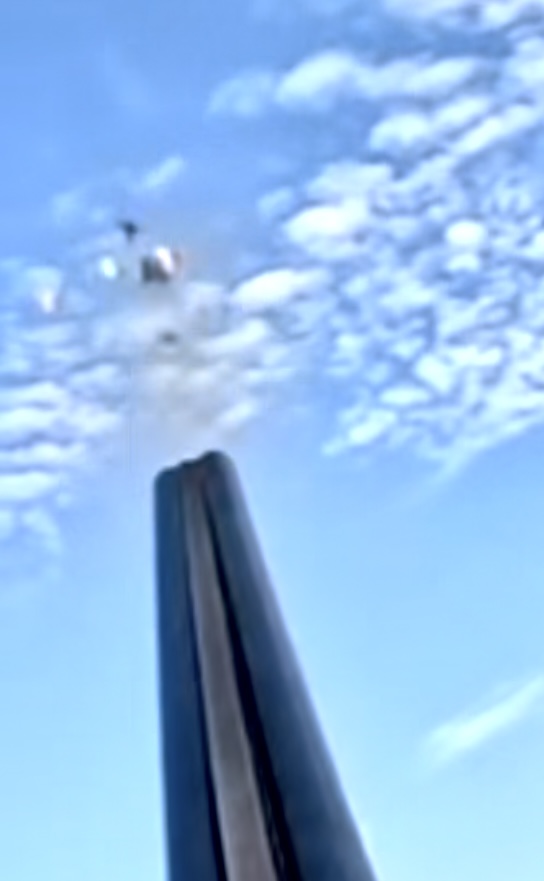
If you look closely, you can see the paper wad exploding, meaning it did it’s job to properly protect your barrel.
Choke Compatibility — What You Need to Know
When it comes to Tungsten Super Shot (TSS #9), the choke conversation is less about fear and more about dialing for distance and pattern density.
TSS #9 produces an extremely dense pattern even through relatively open constrictions because of its high pellet count and minimal pellet deformation. That means an improved cylinder (a fairly open choke) can still give you plenty of pellets on target for close to moderate-range shots (think decoy spreads and short-range blind setups). For many everyday waterfowl scenarios — particularly close-in duck work or flushes where ranges are under ~30 yards — improved cylinder will perform very well with TSS #9.
Why you might choose a tighter choke
The reason hunters use tighter chokes (modified, improved-modified, or full) is to hold pattern density at range. If you plan to consistently shoot at longer distances — 40 yards and beyond — a tighter constriction can concentrate pellets into a smaller circle on your pattern board and increase the chance of multiple pellet strikes in the vitals. For geese or extended-range duck shots, modified or improved-modified is often a better starting point. For turkey, where you’re aiming at a relatively small head/neck target and often shooting tight patterns, many hunters still prefer improved-modified to full constrictions depending on their gun and choke system — but TSS #9’s pellet count sometimes allows slightly more open chokes than you’d use with steel.
Concrete, practical recommendations
- Close-range duck work (10–30 yd): Improved cylinder or modified. Improved cylinder gives fast patterns and plenty of pellet count; modified tightens up a bit for slightly longer shots.
- General waterfowl (30–45 yd): Modified or improved-modified. These are the sweet spots for holding pattern density at moderate ranges.
- Long-range waterfowl / big geese (45+ yd): Improved-modified to modified (and only tighten if your pattern testing supports it). Tungsten helps penetration, so you won’t need an extreme constriction like you might with steel to get the job done.
- Turkey (up to 40–50 yd ethical shots): Start with improved-modified; many turkey hunters move to full or extra-full with traditional lead. With TSS #9, pattern-test before defaulting to a full choke — you may find IM or Modified gives cleaner, more useful patterns.
- Upland or flushing birds: Improved cylinder is a great go-to for quick patterns and fewer cripples at close range.
Critical safety and compatibility checks
- Always confirm your choke is rated for steel / TSS — look for markings like “STEEL” or “TSS” on the choke or in the owner’s manual. If a choke is marked “LEAD ONLY,” do not use it with tungsten or steel.
- Use matched, quality chokes: modern threaded aftermarket tubes (Krieghoff, Carlson, Briley, etc.) usually publish safe-use guidance for hard shot. Factory fixed chokes can be fine if the manual lists steel/TSS compatibility.
- Avoid extreme constrictions without testing: jamming a highly constricted choke into a gun that hasn’t been patterned for it can produce odd patterns or pressure anomalies. Pattern first.
- If in doubt, test more open and work tighter — it’s easier to tighten up later than to open after you’ve committed to a full choke.
Pattern testing is non-negotiable
Every shotgun, choke, and load is a system — and small differences matter. The only way to know what a given choke will do with BRSC TSS #9 in your gun is to pattern it:
- Fire 5 rounds at 40 yards (or your preferred hunting distance) onto a 30″ or 36″ patterning board.
- Measure pellet distribution and count the hits in the vital-zone circle you draw.
- Compare improved cylinder / modified / IM / full results and pick the choke that gives the highest pellet count in your target zone at the distance you intend to shoot.
Quick checklist for setting chokes with TSS #9
- ✅ Confirm choke is steel/TSS-rated.
- ✅ Start at improved cylinder for close-range work.
- ✅ Move to modified/IM for 30–45 yd hunting.
- ✅ Pattern-test before you hunt.
- ✅ Record your best combo (gun + choke + TSS #9) for each species and range.
Upgrade Your Hunt with Tungsten Loads
Don’t settle for less stopping power. Shop our premium tungsten shells and make every shot count.
Shop Tungsten LoadsHow BRSC Ensures Barrel Safety
When hunters ask whether tungsten will ruin their barrels, the best answer isn’t a slogan — it’s engineering. At Black River Shot Co., we’ve built our TSS #9 loads around three non-negotiable design pillars: full separation, controlled pressure curves, and manufacturing consistency. Here’s how that translates into real-world barrel protection.
1. Full-length biodegradable wad containment
Our biodegradable cardboard wad is a full-length design engineered to completely isolate the shot column from the bore during the pressure event. That isolation is the primary safety mechanism — if the shot never contacts metal, it cannot score or abrade it. The cardboard wad behaves like a sleeve in the bore: stiff enough during the pressure spike to hold pellets in a tight column, yet engineered to release cleanly at the muzzle so pellets fly free and symmetric.
2. Controlled internal ballistics (pressure curve engineering)
Hard shot performance isn’t just about the pellet — it’s about how the shell behaves under pressure. BRSC develops and validates pressure curves to ensure the pellet column accelerates smoothly and consistently. Abrupt spikes or irregular pressure transitions can deform softer pellets and stress chokes; with tungsten, we carefully tune the propellant and crimp geometry so that pellets experience predictable, gentle acceleration while still achieving the velocities hunters expect. That attention keeps chokes working within their intended tolerances and minimizes any potential for metal-to-pellet contact.
3. Tight quality control & batch testing
One bad hull, one mismatched crimp, or one cheap wad from a different manufacturer can create an outlier that gives people an excuse to fear tungsten. We prevent that by maintaining strict manufacturing tolerances and batch testing every production run. Each lot goes through pattern tests across multiple chokes, internal-ballistics checks, and humidity/durability inspections so we know every case leaving our plant behaves predictably in your gun.
4. Threaded choke compatibility & clear labeling
We recommend you use chokes rated for hard shot, and we make that simple: our packaging includes clear guidance for choke selection and patterning distances. We also test our loads through common aftermarket and factory choke lines and publish recommended starting points (IC → M → IM) so users have a trusted baseline. If a choke is labeled “Lead Only,” we recommend you don’t use it with TSS — not because tungsten will magically damage it, but because manufacturer tolerances weren’t guaranteed for hard shot.
5. Real-world proof — pattern and bore inspections
It’s one thing to say something is safe; it’s another to show it. We routinely run extended barrel inspection trials — firing hundreds of rounds across multiple guns, then performing borescope inspections and pattern comparisons. The consistent finding: no scoring, no unusual choke wear, and repeatable, dense patterns when using BRSC TSS #9 with the recommended choke setups. Those results are why we stand behind our product and why retailers and guides who run our loads in daily use trust them.
What Actually Damages Barrels
People love to blame the ammo when something goes wrong, but the reality is that most barrel damage comes from predictable, preventable causes — not from modern, buffered tungsten loads. Understanding the real culprits helps hunters focus on what actually matters: maintenance, proper choke selection, and buying quality factory ammunition.
The usual suspects
1. Corrosion and poor cleaning habits
Rust is the silent killer. Leaving moisture, old fouling, or salt residue in the bore invites corrosion. Over time, pitting and surface roughness develop; once the bore surface is compromised, any hard pellet (steel, tungsten, or otherwise) will merely expose the damage more clearly. Regular, proper cleaning and a light oil after use prevent this problem entirely.
2. Using the wrong choke or extreme constriction
Pushing hard shot through an overly tight choke can create abnormal pressure and pellet deformation — and that can lead to choke wear or unusual patterns. The issue here is mechanical stress and improper matching of load to constriction, not the metal composition of the shot. That’s why pattern testing (and choosing a choke rated for hard shot) matters.
3. Cheap reloaded or poorly manufactured loads
A single poorly formed crimp, a split wad, or inconsistent hull can create an outlier that behaves badly in the bore. Unlike factory loads with controlled tolerances, low-quality reloads or import loads with inconsistent wads are more likely to cause odd behavior that can be blamed on the shot.
4. Barrel damage from external factors
Dropping a shotgun, using abrasive brushes incorrectly, or running inappropriate cleaning rods can nick or scratch the bore. Mechanical abuse is mechanical abuse — no ammo will prevent it.
5. Failure to inspect and maintain chokes
Choke tubes are precision parts. Failing to clean, inspect, or correctly torque threaded chokes can lead to galling, uneven wear, and shifting constrictions. Again, this is maintenance and fitment, not the shot itself.
Why tungsten isn’t the problem (and sometimes the solution)
- When engineered correctly (full-length wad, proper pressure curve), tungsten reduces the chance of pellet deformation, which actually helps chokes last longer because pellets pass more cleanly through the constriction.
- Tungsten doesn’t introduce new wear mechanisms — it only reveals existing bore issues more quickly because it’s so efficient at transferring energy. If your barrel is already pitted or dirty, any premium load will show that; the fix is maintenance, not ammo avoidance.
Practical maintenance checklist (what to do)
- Clean and dry your bore after every wet or salty day afield; oil lightly for storage.
- Inspect choke threads and borescope the bore periodically for pitting.
- Use only chokes rated for hard/steel/TSS shot.
- Avoid suspicious reloads or unknown-import loads — stick to trusted, tested factory ammo.
- Pattern your gun after any choke or ammunition change and after major cleaning/service.
Shoot Smarter. Protect Your Barrel.
Our TSS #9 tungsten loads deliver tight patterns and proven safety—so you can hunt harder, shoot cleaner, and trust every pull of the trigger.
Shop TSS #9 TungstenThe Takeaway: Performance Without Compromise
Tungsten’s reputation has come a long way. What once started as a whispered warning on message boards has now become the gold standard for hunters who want dense, ethical patterns and total confidence in their gear.
When you strip away the myths and look at the science, it’s simple: barrel damage isn’t caused by tungsten — it’s caused by neglect, poor engineering, or cutting corners. With modern load design, buffered shot columns, and full-length biodegradable wads, there’s zero direct contact between the tungsten pellets and your barrel. That’s why your bore stays clean, your chokes stay true, and your patterns stay consistent season after season.
At Black River Shot Co., we don’t take that trust lightly. Every box of BRSC TSS #9 represents hundreds of hours of pattern testing, pressure validation, and field verification. We’re hunters ourselves — and we build shells we’d trust in our own guns, whether it’s the first day of duck season or the last morning in the turkey woods.
So if you’ve been hesitating to try tungsten because of what you’ve heard online, this is your sign to move forward with confidence. You’ll get the knockdown power, tight patterns, and consistent performance you’ve heard about — without sacrificing the barrel you rely on.
Because at the end of the day, tungsten isn’t hard on your gun.
It’s just hard on everything downrange.
